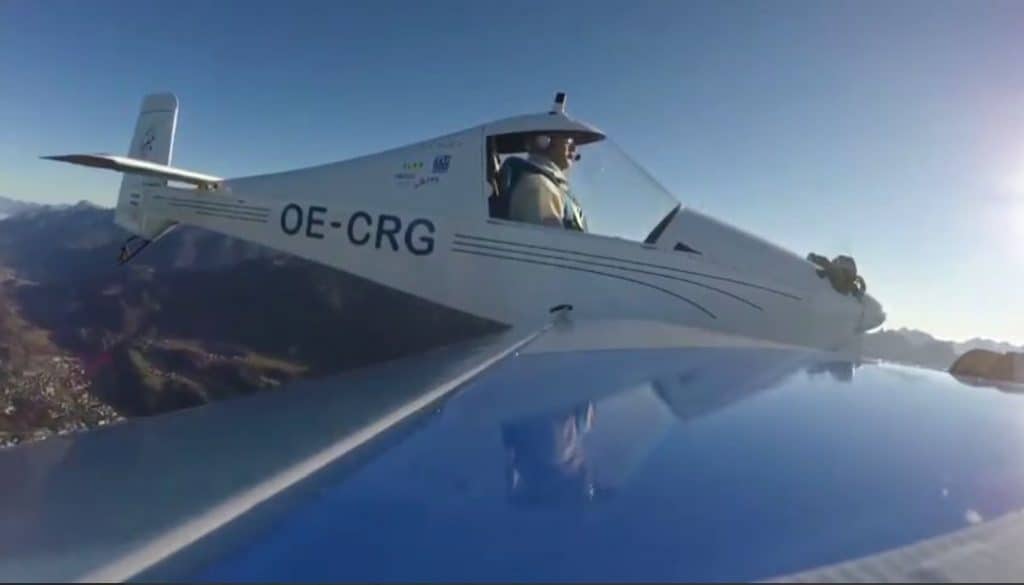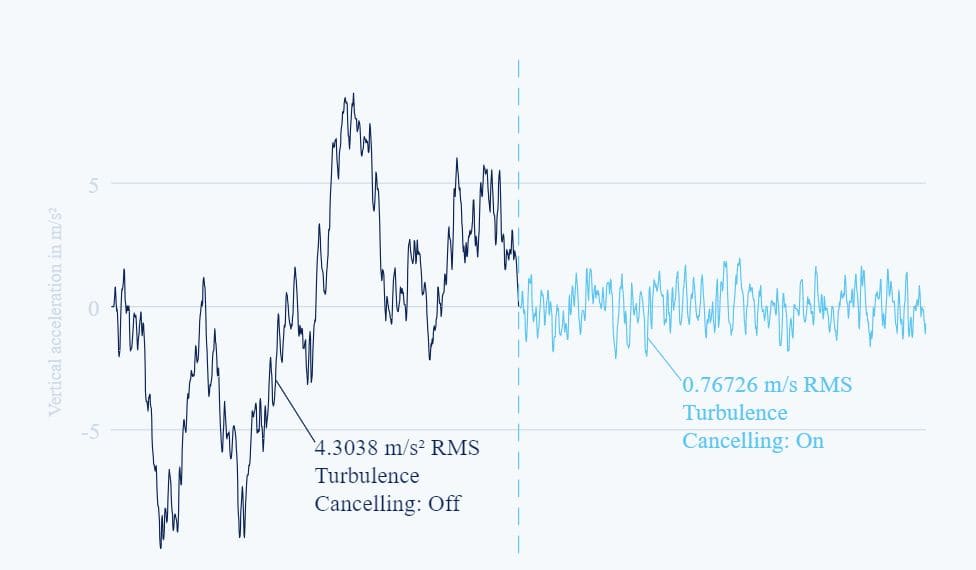New AI Technology Will Reduce Turbulence in Aviation by 80%


Turbulence, which is irregular air movement that causes erratic changes in the altitude or angle of a plane, can cause serious injuries and serious fear among flyers. From 2009 to 2021, 30 passengers and 116 crew members were seriously injured due to turbulence out of the millions of people who fly every year, according to Federal Aviation Administration data. The FAA defines serious injuries as those that require hospitalization for more than 48 hours, or result in fractured bones, severe muscle or tendon damage, harm to internal organs, or second- or third-degree burns.
Climate change could bump up instances of turbulence, with clear-air turbulence being one of the most dangerous kinds. It gives no visible warning and often occurs when pilots don’t have the fasten seatbelt sign turned on. By 2050, pilots around the world can expect to encounter at least twice as much severe clear-air turbulence.
While efforts are made to predict and avoid turbulence, it is not always possible to completely eliminate it. Turbulence can sometimes occur unexpectedly, especially in situations like thunderstorms or when flying through jet streams.
Turbulence Solutions is pioneering an AI technology in aviation to mitigate the discomfort caused by turbulence during flights. Their system, known as “Turbulence Cancelling,” reduces the turbulence loads felt by passengers by more than 80%.

This is achieved through the use of counteracting control surface deflections. The technology employs a combined feedforward and feedback control mechanism, which includes an anticipating measurement of turbulence ahead of the aircraft and high-dynamic lift variation with low inertia flaps.
The system is holistically incorporated into the flight dynamics, accounting for more than just wing root moments. It considers vertical acceleration, pitch, roll, and wing bending. The effectiveness of this technology has been verified through manned flight tests, confirming its positive impact on flight experience.

One of the key components of this technology is Direct Lift Control, which adjusts the wing shape dynamically, much like birds, instead of rotating the entire aircraft. This method avoids adverse Angle of Attack oscillation and can be implemented using conventional flaps or advanced morphing technology.
Another critical element is Turbulence Load Prediction, which allows the system to proactively anticipate turbulence impacts, enabling in-phase compensation signals. This feature can be facilitated through pressure sensors or Wind Lidar technology.
- Turbulence can also mean damage for aircrafts, with about 65,000 flights encountering moderate turbulence every year and about 5,500 encountering severe turbulence. Turbulence-related damage, delays, and injuries cost airlines up to $500 million per year.
Disclaimer
In line with the Trust Project guidelines, please note that the information provided on this page is not intended to be and should not be interpreted as legal, tax, investment, financial, or any other form of advice. It is important to only invest what you can afford to lose and to seek independent financial advice if you have any doubts. For further information, we suggest referring to the terms and conditions as well as the help and support pages provided by the issuer or advertiser. MetaversePost is committed to accurate, unbiased reporting, but market conditions are subject to change without notice.
About The Author
Damir is the team leader, product manager, and editor at Metaverse Post, covering topics such as AI/ML, AGI, LLMs, Metaverse, and Web3-related fields. His articles attract a massive audience of over a million users every month. He appears to be an expert with 10 years of experience in SEO and digital marketing. Damir has been mentioned in Mashable, Wired, Cointelegraph, The New Yorker, Inside.com, Entrepreneur, BeInCrypto, and other publications. He travels between the UAE, Turkey, Russia, and the CIS as a digital nomad. Damir earned a bachelor's degree in physics, which he believes has given him the critical thinking skills needed to be successful in the ever-changing landscape of the internet.
More articles

Damir is the team leader, product manager, and editor at Metaverse Post, covering topics such as AI/ML, AGI, LLMs, Metaverse, and Web3-related fields. His articles attract a massive audience of over a million users every month. He appears to be an expert with 10 years of experience in SEO and digital marketing. Damir has been mentioned in Mashable, Wired, Cointelegraph, The New Yorker, Inside.com, Entrepreneur, BeInCrypto, and other publications. He travels between the UAE, Turkey, Russia, and the CIS as a digital nomad. Damir earned a bachelor's degree in physics, which he believes has given him the critical thinking skills needed to be successful in the ever-changing landscape of the internet.






















































